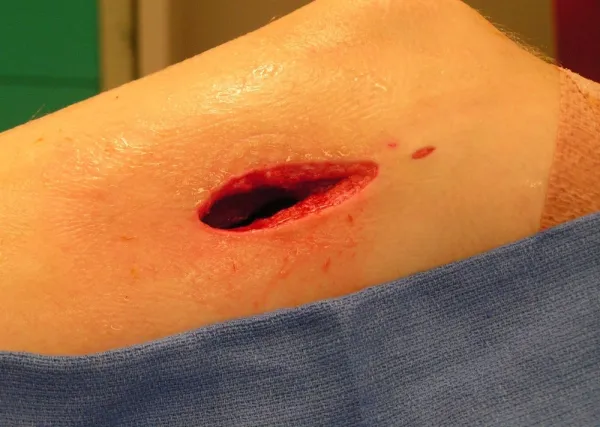Outpatient Facility Coding Alert
New Codes for AMIs, Intestinal Obstructions, Non-Pressure Ulcers, Spinal Stenosis, Breast Lumps & More

It's time to update your systems and templates to get ready for the new and revised ICD-10 codes that take effect October 1, 2017. There are 363 new codes, 142 deletions, and 226 code revisions.
Don't let these numbers overwhelm you, says Rhonda Buckholtz, CPC, CPCI, CPMA, CDEO, CRC, CHPSE, COPC, CENTC, CPEDC, CGSC, who taught a class on the new codes at AAPC's regional conference in Honolulu, Hawaii. "Many of the changes are miscellaneous in nature or just cleanup-fixing misspellings and excluding notes, for example," she tells Outpatient Coding & Billing Alert.
"But there are a few notable changes that will make for huge challenges," Buckholtz stresses. "As always, clinical documentation will be key." Here are the some changes for your hospital outpatient department or ambulatory surgery center to watch out for come October 1.
MI Codes Gain Specificity
Look out for revisions to the I21 range. This category's name will change from "ST elevation and non-ST elevation myocardial infarction" to the heading, "Acute myocardial infarction." Several subcodes under this new heading will help clinicians better describe the type of myocardial infarction the patient experienced.
Example: I21.0 (ST elevation [STEMI] myocardial infarction of anterior wall...) refers to STEMI of the anterior wall, while I21.1 (ST elevation [STEMI] myocardial infarction of inferior wall...) describes STEMI of the inferior wall. Notes under both codes indicate that these codes refer to "Type 1" STEMI.
You'll also see a new AMI code-I21.9 (Acute myocardial infarction, unspecified). And, I21.A (Other type of myocardial infarction) will have a new subcategory that contains the following new codes:
- I21.A1 - Myocardial infarction type 2
- I21.A9 - Other myocardial infarction type
New Codes Specify Whether Intestinal Obstructions Are Complete or Partial
If you work with surgeons who operate to correct intestinal blockages, they'll need to specify in their notes whether the obstructions are complete or partial.
Come October 1, several codes will gain a sixth-digit designation such as the following:
- K56.600 (Partial intestinal obstruction, unspecified as to cause)
- K56.601 (Complete intestinal obstruction, unspecified as to cause)
- K56.609 (Unspecified intestinal obstruction, unspecified as to partial versus complete obstruction)
- K56.690 (Other partial intestinal obstruction)
- K56.691 (Other complete intestinal obstruction)
- K56.699 (Other intestinal obstruction unspecified as to partial versus complete obstruction).
Gut surgeons will also need to document whether intestinal adhesions or obstructions have originated after a procedure or as a result on an infection. Note the changes in the following codes:
Revise K56.5- (Intestinal adhesions [bands] with obstruction [postprocedural] [postinfection]) to drop the postprocedural designation, then add a fifth digit to specify partial versus complete obstruction, as follows:
- K56.50 (Intestinal adhesions [bands], unspecified as to partial versus complete obstruction)
- K56.51 (... with partial obstruction)
- K56.52 (... with complete obstruction).
Add a fifth digit to the postprocedural intestinal obstruction codes, as follows, to denote partial versus complete:
- K91.30 (Postprocedural intestinal obstruction, unspecified as to partial versus complete)
- K91.31 (Postprocedural partial intestinal obstruction)
- K91.32 (Postprocedural complete intestinal obstruction).
Remind Surgeons to Document Tissue Involvement, Laterality for Non-Pressure Chronic Ulcers
If your surgeons perform incision and drainage or flap reconstruction of non-pressure chronic ulcers, you'll want to look out for new sixth digits in the following codes that describe muscle, bone, or other severe involvement in a treated chronic ulcer:
- L97.105 (Non-pressure chronic ulcer of unspecified thigh with muscle involvement without evidence of necrosis)
- L97.106 (... with bone involvement without evidence of necrosis)
- L97.108 (... with other specified severity).
You'll find the similar new sixth digit distinctions for muscle (5), bone (6), or other (8) involvement added to codes that specify laterality:
- L97.11-, (... of right thigh...)
- L97.12-, (... of left thigh...)
In the codes that follow in this series, look for similar changes for right, left or unspecified calf, ankle, midfoot, foot, and lower leg, as well as codes without laterality-buttock, back, or skin on other sites.
ICD-10 2018 Adds New Code Pair to Spinal Stenosis Set
If your ASC or HOPD does pain management or spine procedures, you'll want to take note of a pair of new codes in the M48.06- (Spinal stenosis, lumbar region ...) family:
- M48.061, (... without neurogenic claudication)
- M48.062, (... with neurogenic claudication).
Prior to these revisions, coders have had to code neurogenic claudication in lumbar spinal stenosis with less specificity-M48.06. Come October 1, 2017, you'll look to the operative note to code with more specificity. If the note indicates the spinal stenosis patient has no trouble walking, you'll use M48.061. If the note indicates that walking is a problem, you'll choose M48.062
New Breast Lump Codes Add Laterality and Quadrant Specificity
As with many ICD-10 changes, the new codes for breast lumps add fourth- and fifth-digit specificity that hasn't been there previously:
- N63.0, (Unspecified lump in unspecified breast)
- N63.10, (Unspecified lump in the right breast, unspecified quadrant)
- N63.11, (Unspecified lump in the right breast, upper outer quadrant)
- N63.12, (Unspecified lump in the right breast, upper inner quadrant)
- N63.13, (Unspecified lump in the right breast, lower outer quadrant)
- N63.14, (Unspecified lump in the right breast, lower inner quadrant)
- N63.20, (Unspecified lump in the left breast, unspecified quadrant) and so on through N63.24 following the same pattern as N63.1)
- N63.31, (Unspecified lump in axillary tail of the right breast)
- N63.32, (Unspecified lump in axillary tail of the left breast)
- N63.41, (Unspecified lump in right breast, subareolar)
- N63.42, (Unspecified lump in left breast, subareolar).
In order for you to correctly code medical necessity for breast surgeries, your clinicians will need to document laterality and quadrant, says Terri Brame Joy, MBA, CPC, COC, CGSC, CPC-I, director of operations with Encounter Telehealth in Omaha, Nebraska. Wait for the pathology report to learn the surgeon's diagnosis: You "should not be using the 'unspecified lump' codes very often," Joy tells General Surgery Coding Alert.
Resource: To read the complete list of ICD-10-CM changes, visit https://www.cms.gov/Medicare/Coding/ICD10/2018-ICD-10-CM-and-GEMs.html.
Related Articles
Outpatient Facility Coding Alert
- ICD-10 2018 Updates:
New Codes for AMIs, Intestinal Obstructions, Non-Pressure Ulcers, Spinal Stenosis, Breast Lumps & More
It's time to update your systems and templates to get ready for the new and [...] - ICD-10 2018 Updates:
Your Guide to ICD-10 Changes for Diabetes Coding
Here's how to tell when you should use codes from the Z79 series. When the [...] - Diagnosis Coding:
ICD-10's Little Words Make Big Differences
Watch out for these changes to ICD-10's general coding guidelines for FY 2018. Looking to [...] - ASC Coding:
Master Modifier Madness to Present ASC Claims Denials
Here are the tools you need to use SG, 73, 74 If you're new to [...] - You Be the Coder:
Here's When You Can Correctly Report 43277 In Addition to 43264
Question: During an ERCP procedure, the surgeon removed three stones. How should we code this case? [...] - Reader Question:
Avoid Medicare Compliance Traps When Billing for Premium IOLs
Question: Our ambulatory surgery center performs cataract procedures. Sometimes surgeons insert premium IOLs, and I've heard [...] - Reader Question:
'Limited' vs. 'Extensive' Debridement for Shoulder Arthroscopy
Question: A shoulder surgeon in my HOPD performed a labral debridement, articular shaving and chondroplasty, with [...]




